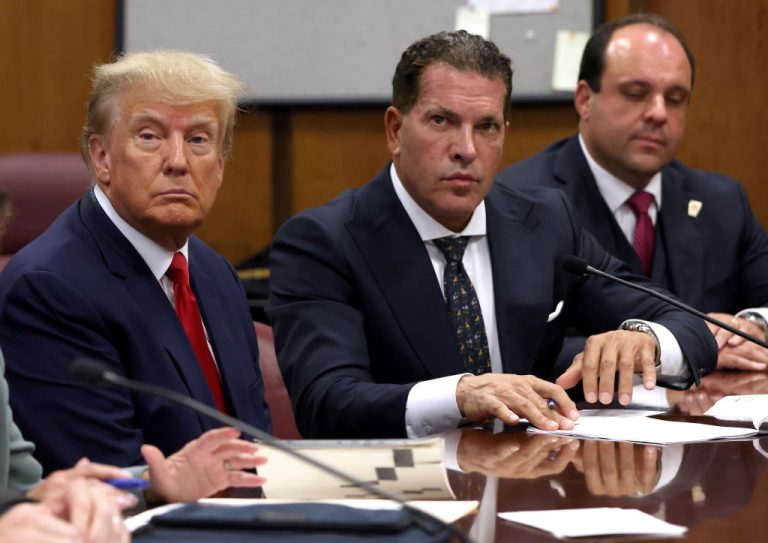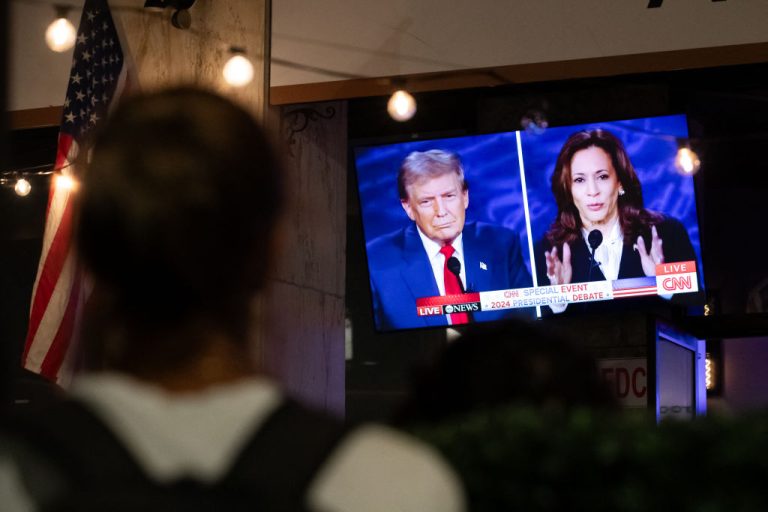Heading into the Democratic National Convention (DNC) — which runs from Aug. 19 to the 22nd in Chicago — newly anointed presidential candidate Kamala Harris revealed much of her economic agenda, an agenda that the Committee for a Responsible Federal Budget (CRFB) estimates will add $1.7 trillion in extra spending over the next decade.
Harris, who is currently vice president, took over the Democratic candidacy from incumbent President Joe Biden, who dropped out of the race in last month following mounting intra-party pressure in the wake of his poor showing at a presidential debate with Republican opponent Donald Trump.
At a rally on Friday, Aug. 16 in Raleigh, North Carolina, Harris laid out her economic agenda, focused on the creation of an “opportunity economy” aimed at reducing the cost of living for everyday Americans.
The vice president’s statements generated excitement among progressives, while opponents criticized it as heavy on government spending and state interventionism.
Cornerstone policies
Among Harris’s cornerstone proposals are a federal ban on price gouging for groceries, upwards of $25,000 in down payment assistance for some first-time home buyers, and tax incentives for developers of starter homes. Harris says she wants to see American home builders build another three million housing units.
Success
You are now signed up for our newsletter
Success
Check your email to complete sign up
She is also proposing expanding the nation’s child tax credit, raising it to $6,000 for children in their first year and broadening the earned income tax credit for childless lower-income workers.
Harris’s proposal to raise the child tax credit came after Trump’s running mate, Ohio Sen. J.D. Vance, suggested earlier in August that the credit be raised from $2,000 per child to $5,000.
On the health care front, Harris says she wants to lower health insurance premiums through the Affordable Care Act.
She says her plan is committed to fighting the high cost of food, housing and healthcare in the first 100 days that she would be in office.
“As President, Kamala Harris will focus on creating an opportunity economy for the middle class that advances their economic security, stability, and dignity,” the campaign said in a statement.
READ MORE:
- US National Debt Surpasses $35 Trillion, Servicing it Now Second-largest Budget Item
- Social Media Warfare: Inside the CCP’s Campaign to Smear Falun Gong, Shen Yun
- Trump Forges Ahead in White House Bid Following Assassination Attempt
Progressive agenda
Harris’ proposal is to eliminate medical debt for millions of Americans by possibly using federal funds to forgive outstanding debt from health care providers.
She also said she would work to cap the out-of-pocket cost of insulin at $35 per month for every American and limit every American’s annual spending on out-of-pocket prescription drugs to $2,000.
Her campaign also said that it would eliminate tax benefits for Wall Street investors who buy single-family rental homes in bulk and prevent corporate landlords from using software price-setting tools to increase rents by large margins.
“I know that most businesses are playing by the rules and creating jobs,” Harris said Friday. “But some are not, and we need to take action when that is the case.”
Felicia Wong, president of Roosevelt Forward, a left-leaning think tank, praised the agenda.
“Harris has made a set of policy choices over the last several weeks that make it clear that the Democratic Party is committed to a pro working-family agenda,” she said. “The days of ‘What’s good for free enterprise is good for America’ are over.”
What it would cost
Harris and her campaign have criticized the economic agenda of opponent Donald Trump, calling his proposed tariffs on foreign imports as a “Trump tax.” They have also contended that Trump’s policies will only expand the national deficit, while describing Harris’ agenda as fiscally sustainable.
In contrast to the interventionist approach laid out in Harris’ plan, the Republican candidate and former president advocates supply-side reform as a means of boosting the availability of affordable housing, bringing down energy prices, and returning jobs to the United States.
Harris routinely refers to her economic policies as being an investment with an eventual return, but not everyone is convinced.
Regarding the overall plan, the Committee for a Responsible Federal Budget (CFRB), a nonprofit NGO, says it would increase deficits by $1.7 trillion over the next decade and this figure could rise to $2 trillion if her housing plan, which currently would only last 4 years, is made permanent.
At the end of July, the U.S. national debt surpassed $35 trillion for the first time in history and continues to climb at a staggering rate.
In January 2024, it hit $34 trillion and just four months prior to that, in September 2023, it had reached $33 trillion.
Regarding price gouging, Harris’s campaign says it would authorize the Federal Trade Commission (FTC) to impose large fines on grocers that impose “excessive” price hikes on their customers.
The plan is intended to deter grocery stores, and the companies that feed them, from engaging in excessive price hikes that are not justified by production cost increases.
The FTC’s role would be expanded to include investigating companies and imposing fines when violations are discovered, similar to how attorneys general operate now.
On Aug. 19, the Harris campaign confirmed at the DNC that it would roll back a Trump-era tax policy that lowered the federal corporate tax rate from 35 percent to 21 percent.
Harris’s campaign says they would raise the corporate tax rate to 28 percent.







